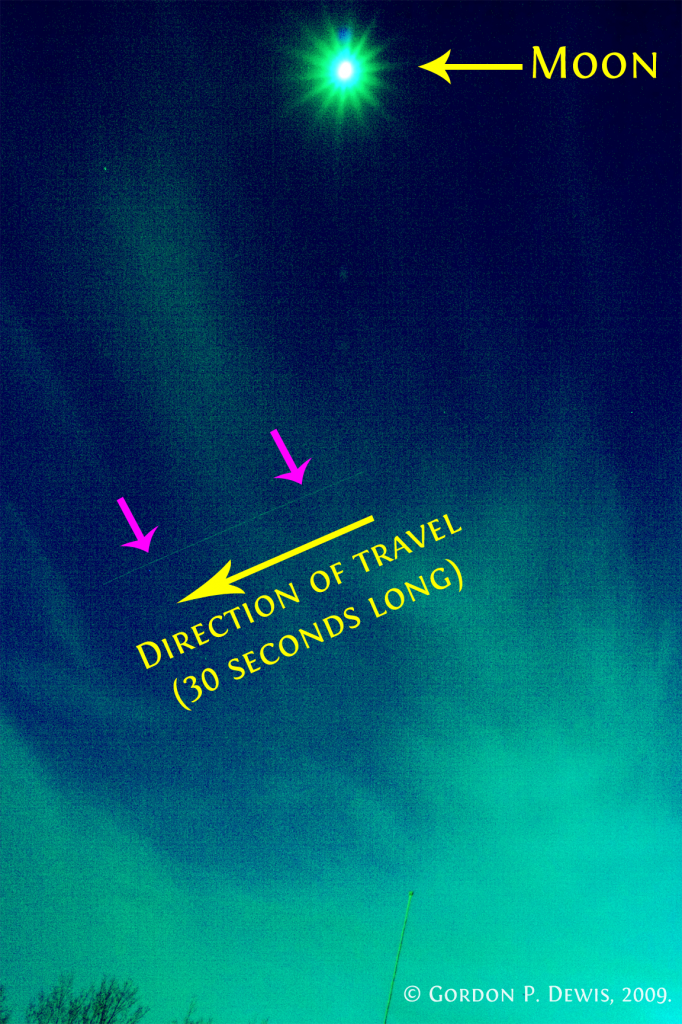Tuesday evening’s ISS and STS-133 passes
I’ve crunched some more precise numbers for this evening’s ISS and STS-133 passes. The times are in UTC, so you need to subtract 5 hours for Eastern Standard time. (Click here to download them in a text file.)
Ottawa-To-ISS Time (UTCG) Azimuth (deg) Elevation (deg) Range (km) ----------------------- ------------- --------------- ----------- 9 Mar 2011 00:20:38.123 292 0 2159.492211 9 Mar 2011 00:21:38.000 287 4 1765.477591 9 Mar 2011 00:22:38.000 280 9 1389.558028 9 Mar 2011 00:23:38.000 267 15 1055.451478 9 Mar 2011 00:24:38.000 244 22 818.373598 9 Mar 2011 00:25:38.000 209 24 774.603489 9 Mar 2011 00:26:38.000 180 18 951.326850 9 Mar 2011 00:27:38.000 164 11 1258.305207 9 Mar 2011 00:28:38.000 156 6 1622.294953 9 Mar 2011 00:29:38.000 150 1 2011.420073 9 Mar 2011 00:29:58.922 149 0 2150.274764
Ottawa-To-STS-133 Time (UTCG) Azimuth (deg) Elevation (deg) Range (km) ----------------------- ------------- --------------- ----------- 9 Mar 2011 00:20:05.553 292 0 2159.008371 9 Mar 2011 00:21:05.000 287 4 1767.294751 9 Mar 2011 00:22:05.000 280 9 1390.441394 9 Mar 2011 00:23:05.000 268 15 1054.707599 9 Mar 2011 00:24:05.000 244 23 814.906252 9 Mar 2011 00:25:05.000 209 24 768.231806 9 Mar 2011 00:26:05.000 180 18 943.899552 9 Mar 2011 00:27:05.000 164 11 1250.970718 9 Mar 2011 00:28:05.000 155 6 1615.247805 9 Mar 2011 00:29:05.000 150 1 2004.620053 9 Mar 2011 00:29:27.464 149 0 2153.829615
Based on these numbers, the Space Shuttle Discovery (STS-133) is about 30 seconds ahead of the ISS (it rises about 30s before the ISS). For an idea of how far this is in the sky, take a look at this photo from a couple of years ago. The trail of the ISS is 30 seconds long.




 AKA Keeper of Maps, I'm a geocacher who lives in Ottawa, Canada.
AKA Keeper of Maps, I'm a geocacher who lives in Ottawa, Canada.
